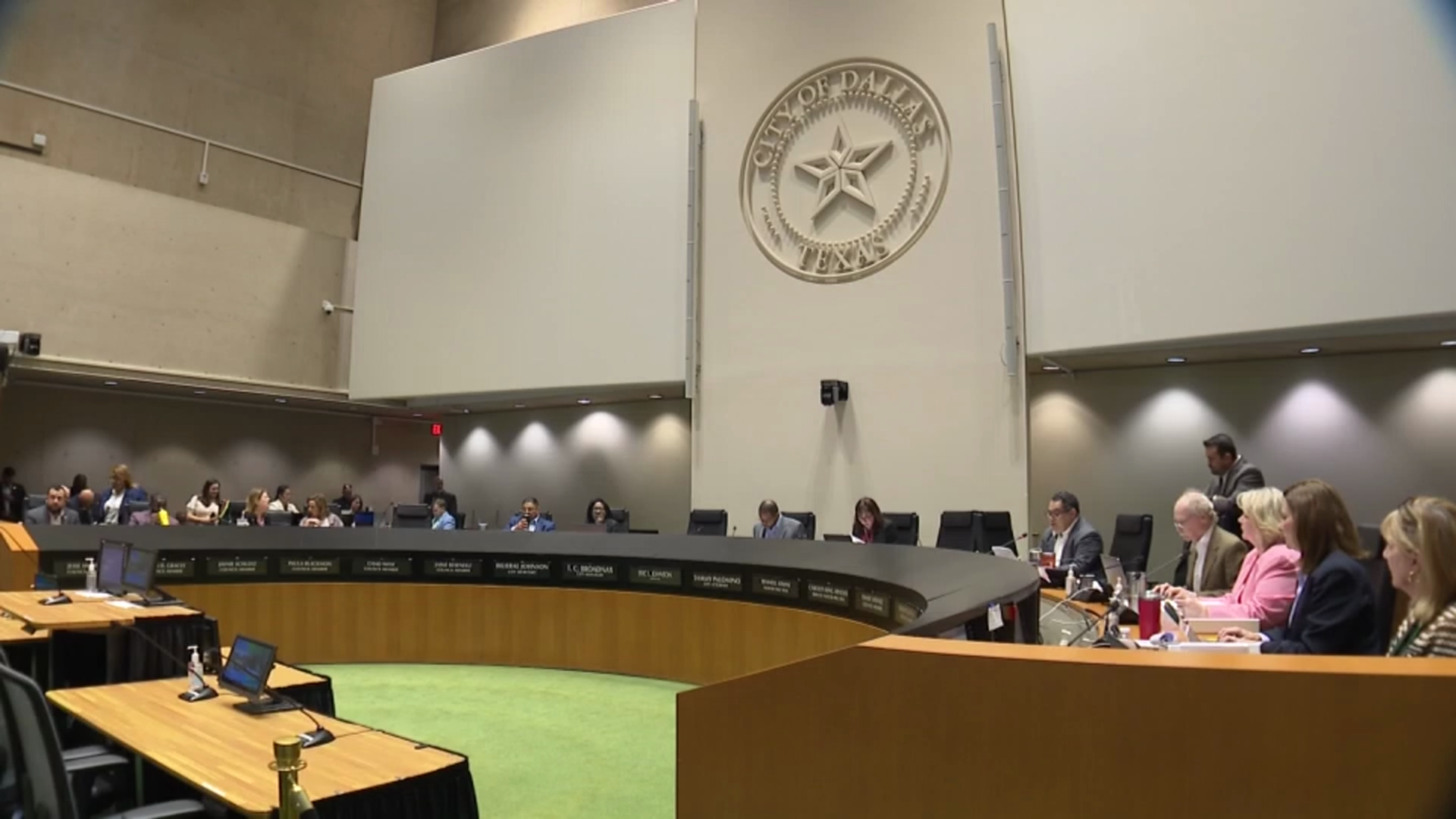In the searing summer sun, Dallas Police have brought their own heat to some of the city’s hottest spots for violent crime.
NBC 5 Investigates recently rode with the department’s Place Network Investigations or “PNI” Violent Crime Reduction Task Force, a unit that uses intelligence information to target places and groups associated with violent crime in areas impacted most by violent crime.
It wasn’t long before NBC 5 Investigates saw officers chase a man wanted on federal warrants, seizing suspected heroin and our team watched as an officer approached a car with a gun drawn, making a felony traffic stop, resulting in the arrest of another person wanted on another warrant.
The PNI team is part of Police Chief Eddie Garcia’s plan to target what he calls, “the hotspot within the hotspot.” A more surgical approach to targeting specific buildings and activities associated with violence within high crime “grids” the department has identified.
Get DFW local news, weather forecasts and entertainment stories to your inbox. Sign up for NBC DFW newsletters.
Three summers into Garcia’s plan to reduce violent crime, the city has seen significant results.
Aggravated assaults are down about 15% compared to this time last year. Robberies are down about 9%. Murders are still up about 7% compared to early September 2022, but Garcia believes by continuing to focus on reducing violent assaults, the number of murders will eventually trend down as well.
Under Garcia’s strategy, police have divided the city into more than 100,000 tiny grids about the size of a football field. Grids that lead the city in assaults and robberies get the most attention first. The department reports a 31% decrease in violent crime in the grids it has targeted.
NBC 5 Investigates
Uncover. Reveal. Expose.
“Very few of our hotspots, after we are done with that two-to-three-month observation period, return,” Garcia said in a recent interview with NBC 5 Investigates.
But community leaders and criminologists NBC 5 Investigates spoke to expressed concern that crime will eventually come back. They question how police will hold their ground and keep crime from returning in spots that have seen improvement, while also moving on to new emerging hotspots.
“In most places, you know, for the past 26 years I've been studying crime across the United States, I can tell you that unfortunately, it does come back”, said Alex Del Carmen a criminologist at Tarleton State University.
Del Carmen said that grid strategies are proven effective methods for achieving short-term violent crime reduction. But securing long-term reductions can be more difficult, he said.
“The problem is, is that just like in medicine, you have to make sure that the patient, once it's recovered, that the patient follows the protocol and continues to be looked at by the physician,” Del Carmen said.
Del Carmen added that there is “no question” that the hardest work for Dallas Police is still ahead as the city works to make the initial crime reductions more permanent.
NBC 5 Investigates heard similar concerns in an area that Garcia considered the department’s biggest recent success story, an apartment complex near Illinois and Overton where Danuel Rodgers told us his family used to live in constant fear of violence.
“Shootouts in the back, in the front, in the middle. Like I said, it was chaos,” Rodgers told NBC 5 Investigates.
Since then, Dallas Police have poured resources into the community.
“It was the number one crime grid in the city when I got here and I think after about six treatment times, it did come back six times, it was no longer in the Top 50,” Garcia said.
Rodgers said he has witnessed a day and night transformation in the neighborhood.
“It's really good that they did that, but we need that to continue, you know, we need that to continue,” Rodgers said.
Mar Butler, a community leader who partnered with police as a violence interrupter in the neighborhood said to sustain the progress made the department needs to stick to the formula that led to success in the first place. He fears as police shift focus to new pressing grid locations, their relationships with the community will dwindle and troublemakers may return.
“They migrate to another area. So, therefore, if they knew that this was once a crime area before, what's to stop it from becoming another crime, high crime grid again,” Butler said.
Garcia acknowledges it will take more than a grid strategy to keep crime from returning to spots where the department has worked to drive down the number of incidents.
“And I have never preached that this was going to get us out, we're not going to arrest our way into a safer Dallas,” Garcia said.
That’s why Garcia said his plan also includes partnering with officials at Dallas City Hall to transform places and life circumstances that lead to crime. Police are working with Dallas Code Compliance and other departments to address neighborhood spots that become crime magnets.
The chief has also initiated what he calls a “focused deterrence” strategy where officers reach out to past offenders, offering to connect them with job and education resources and other social services, while reminding them the police are ready to send them back to jail if they choose to commit crimes instead.
As those efforts play out, Garcia said the department will continue its focus on initial reductions in violence in the grids most affected.
“Police are the Tylenol, we are the Advil to reduce the fever," Garcia said.
On the streets, officers seem committed to the current plan.
Using GPS tracking the department has discovered officers assigned to conduct patrols in specific grids have stayed on target 90% of the time. Numbers, Garcia said, are rarely achieved in other cities.



